Related Research Articles
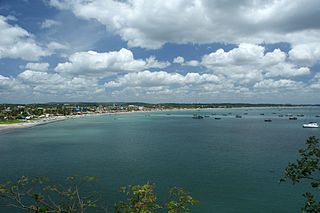
Trincomalee also known as Gokanna/Gokarna, is the administrative headquarters of the Trincomalee District and major resort port city of Eastern Province, Sri Lanka. Located on the east coast of the island overlooking the Trincomalee Harbour, 237 kilometres (147 mi) north-east of Colombo, 182 kilometres (113 mi) south-east of Jaffna and 111 kilometres (69 mi) miles north of Batticaloa, Trincomalee has been one of the main centres of Sri Lankan Tamil language speaking culture on the island for over two millennia. With a population of 99,135, the city is built on a peninsula of the same name, which divides its inner and outer harbours. People from Trincomalee are known as Trincomalians and the local authority is Trincomalee Urban Council. Trincomalee city is home to the famous Koneswaram temple from where it developed and earned its historic Tamil name Thirukonamalai. The town is home to other historical monuments such as the Bhadrakali Amman Temple, Trincomalee, the Trincomalee Hindu Cultural Hall and, opened in 1897, the Trincomalee Hindu College. Trincomalee is also the site of the Trincomalee railway station and an ancient ferry service to Jaffna and the south side of the harbour at Muttur.

Koneswaram temple of Trincomalee or Thirukonamalai Konesar Temple – The Temple of the Thousand Pillars and Dakshina-Then Kailasam is a classical-medieval Hindu temple complex in Trincomalee, a Hindu religious pilgrimage centre in Eastern Province, Sri Lanka. The most sacred of the Pancha Ishwarams of Sri Lanka, it was built significantly during the reign of the early Cholas and the Five Dravidians of the Early Pandyan Kingdom atop Konesar Malai, a promontory overlooking Trincomalee District, Gokarna bay and the Indian Ocean. Its Pallava, Chola, Pandyan and Jaffna design reflect a continual Tamil Saivite influence in the Vannimai region from the classical period. The monument contains its main shrine to Shiva in the form Kona-Eiswara, shortened to Konesar and is a major place for Hindu pilgrimage, at its height of fame labelled the "Rome of the Gentiles/Pagans of the Orient". Connected at the mouth of the Mahavilli Ganga River to the footprint of Shiva at Sivan Oli Padam Malai at the river's source, the temple symbolically crowns the flow of the Ganges River from Shiva's head of Mount Kailash to his feet.
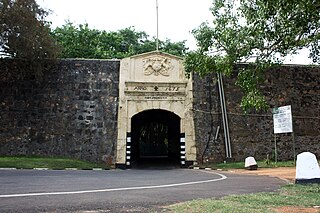
Fort Fredrick, also known as Trincomalee Fort or Fort of Triquillimale, is a fort built by the Portuguese at Trincomalee, Eastern Province, Sri Lanka, completed in 1624 CE, built on Swami Rock-Konamamalai from the debris of the world-famous ancient Hindu Koneswaram temple. The temple was destroyed by the Portuguese colonial Constantino de Sá de Noronha under Phillip III, occupier of the Jaffna kingdom and Malabar country on the island. On the Konamalai cape was also built a new village of Portuguese and Tamil people, 50 Portuguese soldiers and inside the fort, a church named after "Nossa Senhora de Guadalupe". The Fort of Triquillimale was dismantled and rebuilt by the Dutch in 1665, renamed Fort Fredrick.

The Jaffna Kingdom, also known as Kingdom of Aryachakravarti, of modern northern Sri Lanka was a historic monarchy that came into existence around the town of Jaffna on the Jaffna peninsula. It was traditionally thought to be established after the invasion of Magha, who is credited with the founding of the Jaffna kingdom and is said to have been from Kalinga, in India. Established as a powerful force in the north, north east and west of the island, it eventually became a tribute-paying feudatory of the Pandyan Empire in modern South India in 1258, gaining independence in 1323, when the last Pandyan ruler of Madurai was defeated and expelled in 1323 by Malik Kafur, the army general of the Muslim Delhi Sultanate. For a brief period, in the early to mid-14th century, it was an ascendant power in the island of Sri Lanka when all regional kingdoms accepted subordination. However, the kingdom was eventually overpowered by the rival Kotte Kingdom, around 1450 when it was invaded by Prince Sapumal under the Kotte Kingdom's directive.

Sri Lankan Tamils, also known as Eelam Tamils, Ceylon Tamils or simply Tamils, are members of the Tamil ethnic group native to the South Asian island state of Sri Lanka. Today, they constitute a majority in the Northern Province, live in significant numbers in the Eastern Province and are in the minority throughout the rest of the country. 70% of Sri Lankan Tamils in Sri Lanka live in the Northern and Eastern provinces.
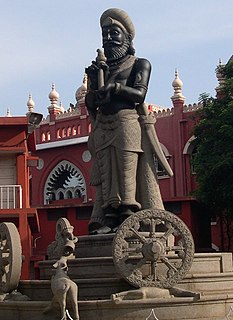
Ellalan was a member of the Tamil Chola dynasty, also known as "Manu Needhi Cholan", who upon capturing the throne became king of the Anuradhapura Kingdom, in present-day Sri Lanka, from 205 BCE to 161 BCE.

Ketheeswaram temple is an ancient Hindu temple in Mannar, Northern Province Sri Lanka. Overlooking the ancient Tamil port towns of Manthai and Kudiramalai, the temple has lain in ruins, been restored, renovated and enlarged by various royals and devotees throughout its history. Tirukkētīsvaram is one of the Pancha Ishwarams dedicated to the Hindu deity Shiva and is venerated by Shaivas throughout the continent. Throughout its history, the temple has been administered and frequented by Sri Lankan Hindu Tamils. Its famous tank, the Palavi tank, is of ancient antiquity and was restored from the ruins. Tirukkētīsvaram is one of the 275 Paadal Petra Sthalams of Shiva glorified in the poems of the Tevaram.
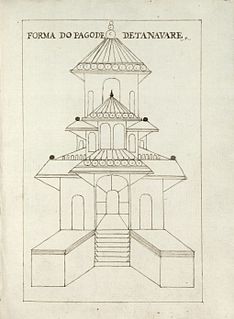
Tenavaram temple was a historic Hindu temple complex situated in the port town Tenavaram, Tevanthurai, Matara) near Galle, Southern Province, Sri Lanka. Its primary deity was a Hindu god Tenavarai Nayanar (Upulvan) and at its zenith was one of the most celebrated Hindu temple complexes of the island, containing eight major kovil shrines to a thousand deity statues of stone and bronze and two major shrines to Vishnu and Shiva. Administration and maintenance was conducted by residing Hindu Tamil merchants during Tenavaram's time as a popular pilgrimage destination and famed emporium employing over five hundred devadasis.
Yalpana Vaipava Malai is a book written by a Tamil poet named Mayil Vaakaanar in 1736. This book contains historical facts of the early Tamil city of Jaffna. The book which may have been written around 1736 during the Governorship of Jan Maccara, the then Dutch Governor of Jaffna. It was translated from Tamil by C. Brito, and was first published in 1879. The work is looked upon as one of great authority among the Tamils of Jaffna.
Sri Lankan Tamil literature or Ceylon Tamil literature refers to Tamil literature produced in the current day country of Sri Lanka by various Tamil speaking communities such as the Sri Lankan Tamils, Indian Tamils of Sri Lanka and Sri Lankan Muslims. The earliest extant records survived from the Sangam age academies and continued in the medieval era in the courts of the Jaffna kingdom until modern times. The destruction of the Saraswathy Mahal library of Nallur and the burning of Jaffna library led to the loss of a large tract of Sri Lankan Tamil literature, although much survives through oral traditions and the unearthing and preservation of palm-leaf manuscripts, copper plate inscriptions & stone inscriptions.
History of Eastern Tamils of Sri Lanka is informed by local legends, native literature and other colonial documents. Sri Lankan Tamils are subdivided based on their cultural, dialects & other practices as into Northern, Eastern and Western groups. Eastern Tamils inhabit a region that is divided into Trincomalee District, Batticalo District and Ampara District.
Vanniar or Vanniyar was a title borne by chiefs in medieval Sri Lanka who ruled in the Chiefdom of Vanni regions as tribute payers to the Jaffna vassal state. There are a number of origin theories for the feudal chiefs, coming from an indigenous formation. The most famous of the Vanni chieftains was Pandara Vannian, known for his resistance against the British colonial power.

The Vanni chieftaincies or Vanni principalities was a region between Anuradhapura and Jaffna, but also extending to along the eastern coast to Panama and Yala, during the Transitional and Kandyan periods of Sri Lanka. This land was a collection of chieftaincies of principalities that were a collective buffer zone between the Jaffna Kingdom, in the north of Sri Lanka, and the Sinhalese kingdoms in the south. The emergance of these chieftaincies were a direct result of the breakdown of central authority and the collapse of the Kingdom of Polonnaruwa in the 13th century, as well as the establishment of the Jaffna Kingdom in the Jaffna Peninsula. Control of this area was taken over by dispossessed Sinhalese nobles and chiefs of the South Indian military of Māgha of Kalinga (1215–1236), whose 1215 invasion of Polonnaruwa led to the kingdom's downfall. Sinhalese chieftaincies would lay on the northern border of the Sinhalese kingdom while the Tamil chieftaincies would border the Jaffna Kingdom and the remoter areas of the eastern coast, outside of the control of either kingdom.
Jeyaveera Cinkaiariyan was the Aryacakravarti king of the Jaffna Kingdom in modern-day northern Sri Lanka, who had a military confrontation with a southern chief known as Alagakkonara. According to traditional sources, Alagkkonara defeated Jeyaveera's naval and land forces and assumed royal power in the southern Gampola Kingdom. Later, King Harihara II's brother Yuvaraja Virupanna invaded Sri Lanka from Karnataka, defeated Alagkkonara and established a pillar of victory there.

Thiriyai is a small village in the eastern Trincomalee District of Sri Lanka. It is situated about 25 miles north of Trincomalee town through Nilaveli. The total population of the village is 640 at the 2012 census.

Nilaveli is a coastal resort town and suburb of the Trincomalee District, Sri Lanka located 16 km northwest of the city of Trincomalee. A historically popular Tamil village and tourist destination of the district alongside the nearby Uppuveli, the numbers of visitors declined following the 2004 Indian Ocean tsunami and Sri Lankan Civil War, but have risen again since 2010. Pigeon Island National Park, one of the two marine national parks of the region is situated 1 km off the coast of Nilaveli, its many species of vegetation, coral and reef fish contributing to Nilaveli's rich biodiversity.

Ati Konanayakar or Aathi Koneswaram is a regionally important Hindu temple in Tampalakamam village in the Trincomalee District of Sri Lanka. The name of the temple in Tamil means the "temple of the original lord of Koneswaram". It is situated 24 kilometers (15 mi) from the port town of Trincomalee. The temple was constructed during the 17th century as a successor to the Koneswaram temple that was destroyed by Portuguese colonials in 1622.
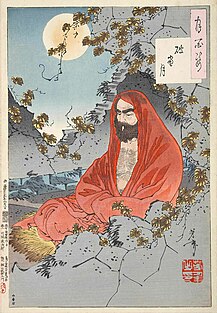
Buddhism amongst Tamils was historically found in Tamilakam and the Jaffna Peninsula.

Pathirakali Amman Temple – Pathirakali Ambal Kovil – or the Kali Kovil, Trincomalee is a Hindu temple dedicated to the goddess Bhadrakali, a form of the goddess Kali Amman in Trincomalee, Eastern Province, Sri Lanka. The Kali temple of the ancient Trincomalee Koneswaram Temple Compounds, a large complex of connected shrines in the Trincomalee Konesar Malai area, the temple is located close to the Trincomalee Hindu College.

The Pancha Ishwarams are five coastal ancient kovils built in dedication to the Hindu supreme being Ishwara in the form of the god Shiva, located along the circumference of Sri Lanka.
References
- ↑ Pathmanathan, S. (1978). "The Kingdom of Jaffna". 1. University of London/Colombo : Arul M. Rajendran: 267. OCLC 6530926.
Tamil stone inscription inedited on the stone pillar in Kankuveli are grant records made by the chieftain Malaiyil Vanniyanar and the Eluril Atappar (Atappar of the seven villages) to the shrine of Konanayakar of Kona -ma malai.
Cite journal requires|journal=(help) - ↑ Academy, Himalayan. "Hinduism Today Magazine". www.hinduismtoday.com. Retrieved 2019-05-11.